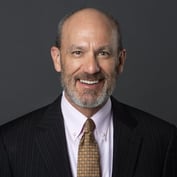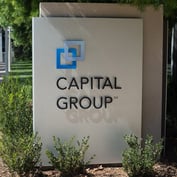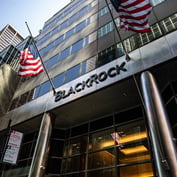Karen Andersen, CFA
Morningstar
[email protected]
312-696-6000
We think Roche Holding’s (RHHBY) drug portfolio and industry-leading diagnostics conspire to create sustainable competitive advantages. As the market leader in both biotech and diagnostics, this Swiss health-care giant is in a unique position to guide global health care into a safer, more personalized, and more cost-effective endeavor.
In Roche’s pharmaceutical division, blockbuster cancer biologics acquired with Genentech — including Avastin, Rituxan and Herceptin — continue to grow quickly as they gain market share in approved indications and garner widened approval in new indications and emerging markets. The acquisition also facilitates information sharing between Genentech and Roche researchers, boosting research and development productivity and personalized medicine offerings that take advantage of Roche’s diagnostic arm.
For example, BRAF inhibitor Zelboraf, approved in melanoma [treatment] in 2011, is among the first drugs tested in biomarker-selected patients from the start. We expect such synergies to increase as Roche’s pipeline advances.
Roche’s biologics focus and innovative pipeline are key to the firm’s ability to maintain its wide moat and continue to achieve growth as current blockbusters mature. Three-fourths of Roche’s top pharmaceutical sales are from biologics [products manufactured in or extracted from biological sources], which provides a buffer against traditional generic competition.
In addition, biosimilar competitors have witnessed delays and aren’t likely to reach the market until at least 2016. With the launch of Perjeta in 2012 and Kadcyla in 2013, Roche is in a strong position to continue expanding its breast cancer franchise beyond Herceptin, regardless of biosimilars [products with active drug substances made by a living organism or derived from a living organism], which we expect as early as 2016 in Europe and 2019 in the U.S. Gazyva, now approved in the U.S. in chronic lymphocytic leukemia (CLL) and in testing in non-Hodgkin’s lymphoma (NHL), could also extend the longevity of the Rituxan franchise.
Roche’s diagnostics business is also strong. With a 20% share of the global in vitro diagnostics market, Roche holds the number-one rank in this industry over competitors Siemens, Abbott and Johnson & Johnson. Pricing pressure has been intense in the diabetes-care market, but new instruments and immunoassays have buoyed the core professional diagnostics segment.
Roche’s wide moat arises from its status as the leader in oncology therapeutics (30% market share) as well as in vitro diagnostics (20% share), and the firm has a promising strategy of combining its expertise in both areas to generate a growing personalized medicine pipeline, making use of companion diagnostics. Much of Roche’s moat in pharmaceuticals is derived from its long relationship with Genentech.
Roche first acquired a controlling interest in Genentech in 1990 and owned almost 56% of the firm before Genentech’s board accepted its $95 per share offer to acquire a full interest in 2009. Genentech’s portfolio of blockbuster cancer biologics — which includes Avastin, Rituxan and Herceptin— continues to grow quickly. Genentech’s commercial structure in the United States complemented Roche’s international operations, and Roche also secured rights to Genentech’s pipeline in the process, as its option to in-license drug candidates from Genentech was set to expire in 2015.
Roche’s Herceptin was one of the original personalized therapies, and breast and gastric cancer patients who are human epidermal growth factor receptor two positive (HER2+) continue to see strong survival benefits from this antibody therapy. Since then, Roche has also demonstrated the benefit of Tarceva in EGFR-mutant patients, introduced Kadcyla and Perjeta for HER2+ patients, and created new diagnostic tests to determine the course of Pegasys therapy in hepatitis C.
The firm’s melanoma drug Zelboraf, specifically targeted to patients with BRAF mutations, was the first product developed using a companion diagnostic from the start. Pairing drugs with diagnostics early in development shortens development timelines, reduces upfront investment, and boosts the likelihood of a meaningful benefit to patients. We think this will allow Roche to justify high price tags globally for future personalized therapies, despite global pricing pressure and budget constraints.








 March 02, 2015 at 07:00 PM
March 02, 2015 at 07:00 PM










